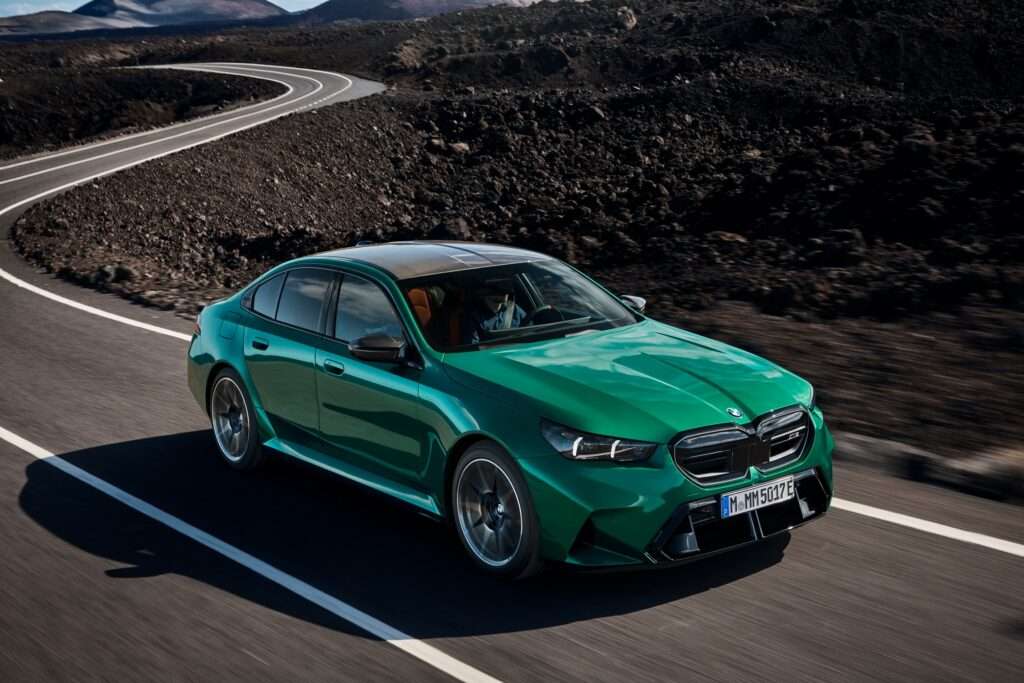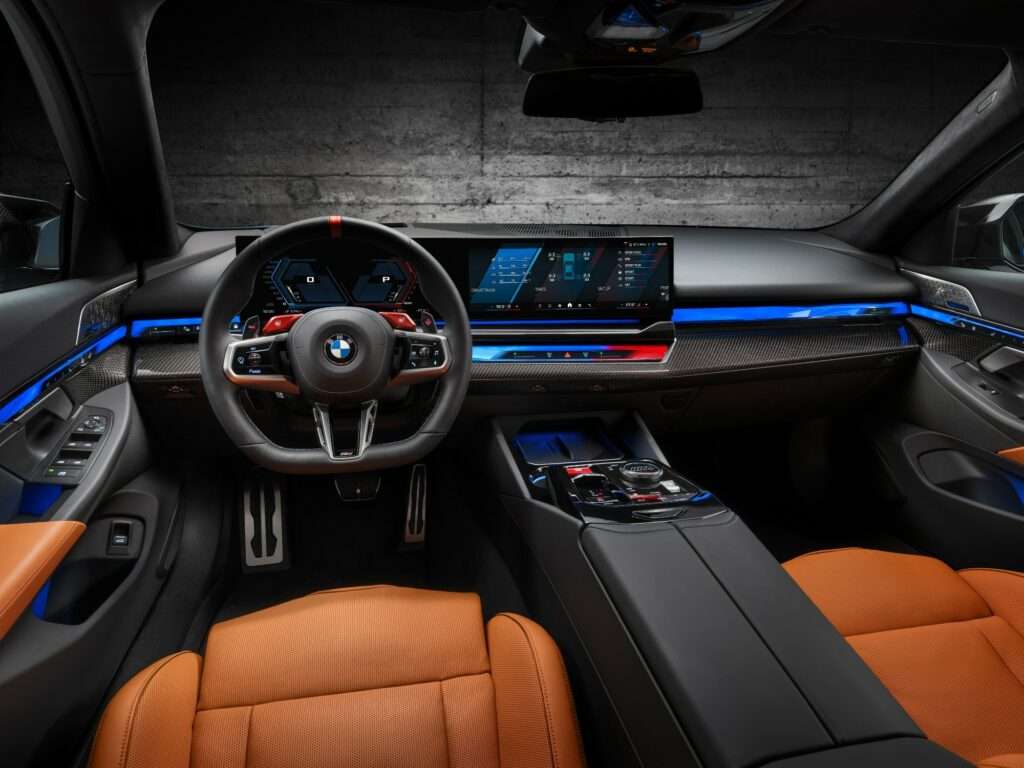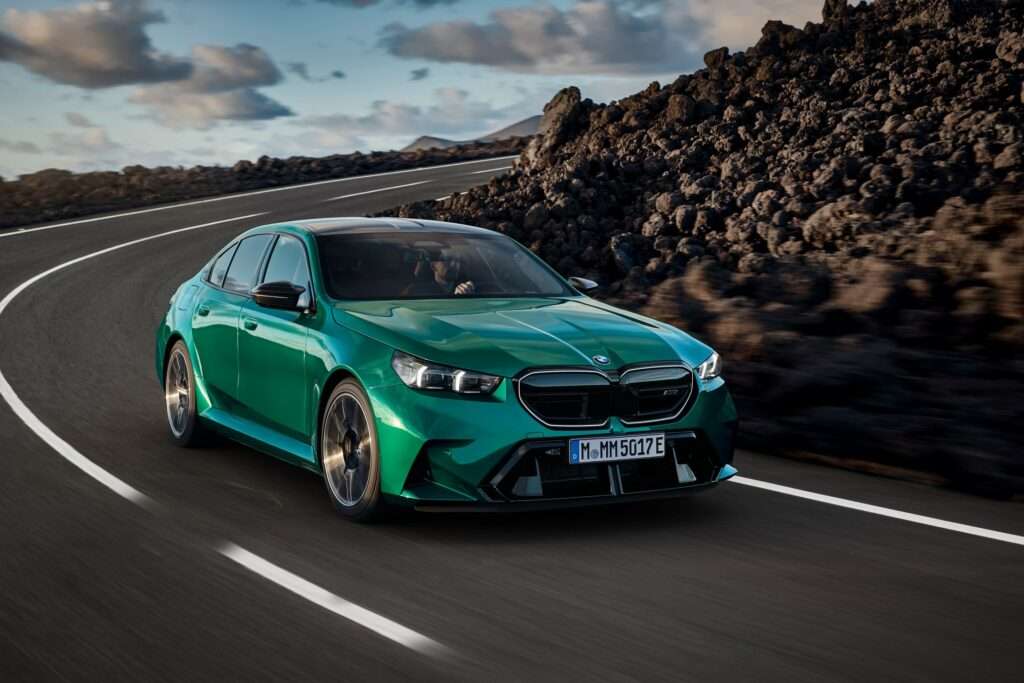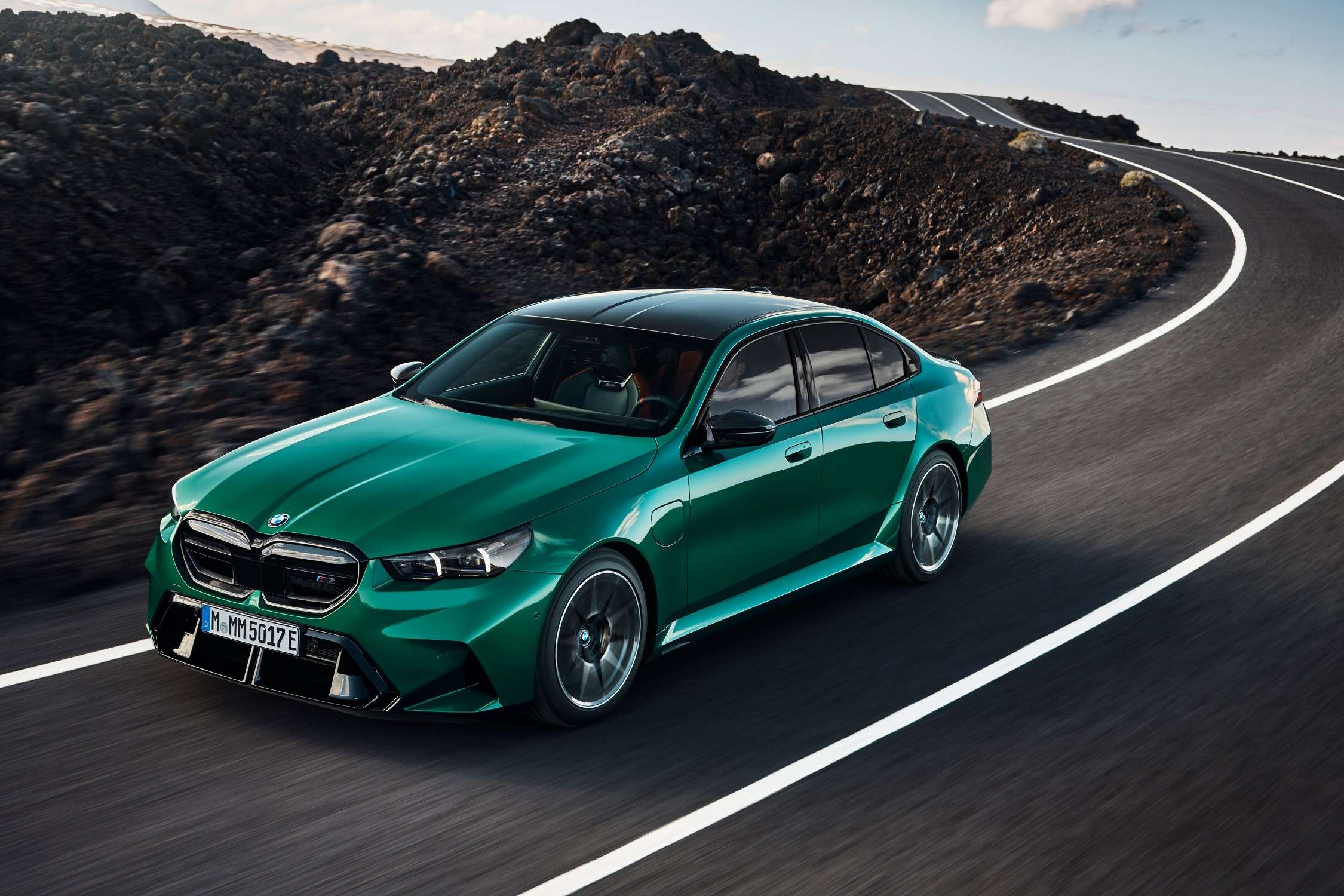The BMW M5 is powering into a new era. With 40 years of history having passed under its wheels, the legendary high-performance sedan has reached its seventh generation. And the executive model from BMW M now has an electrified drive system for the first time.
A model-specific version of the M Hybrid system gives the new BMW M5 a maximum system output of 717 hp and peak system torque of 738 lb-ft. The combination of a high-revving V8 engine with M TwinPower Turbo technology and an electric motor, abetted by an 8-speed M Steptronic transmission with Drivelogic and the M xDrive all-wheel-drive system gives drivers a new experience of the performance with which M models have made their name.

The new edition of the high-performance sedan sees BMW M taking another step in its evolution towards electrification. The combination of combustion engine and electric motor in the new BMW M5 is closely related to the drive system in the BMW M Hybrid V8 endurance racing car. The intelligently controlled interaction between the engine and the electric motor, the power transfer, and the chassis technology tuned perfectly to the performance characteristics provide the latest example of how to improve the driving experience on the road using established Motorsport expertise.
The new BMW M5 will make its world premiere at the Goodwood Festival of Speed in England in July 2024, with production at BMW Group Plant Dingolfing beginning the same month. The worldwide market launch of the new BMW M5 will start in November 2024.

M Hybrid System in the New BMW M5
The M Hybrid drive system of the new BMW M5 is based on a 4.4-liter V8 engine with a classically high-revving nature. The engine is bound to impress with its improved response, willingness to rev, and optimized efficiency. It utilizes the thermodynamic benefits of a cross-bank exhaust manifold, while a reinforced crankshaft drive, turbochargers mounted close to the exhaust manifold – and with adapted indirect charge air cooling and an electrically controlled blow-off valve – plus a vane-type oil pump and a weight-minimized plastic oil sump, all play a role in the engine’s efficiency.
An optimized oil separation process with a variable impactor enhances the engine’s emissions performance. In addition, a dual air intake duct ensures reduced pressure losses and enhanced acoustics via noise dampers positioned near the engine.

High-Voltage Battery, Power Electronics, and Combined Charging Unit
The energy for the electric drive system is stored in a high-voltage battery, which is installed in the underbody of the new BMW M5 to save space. The positioning of the battery here helps to lower the center of gravity, which has a positive effect on handling agility. The integration of the battery also avoids restricting cabin or luggage space in any way. The lithium-ion battery delivers impressive energy density at a cell and battery-pack level. It has a usable energy content of 14.8 kWh and provides a constant flow of power across a wide temperature range and even under the heavy loads brought by a particularly sporty driving style.

The power electronics of the M Hybrid system optimize the interplay between the combustion engine and the electric motor. Depending on the situation and the driver’s preferences, the drive system can be set up to maximize either outright performance or efficiency. As well as providing an electric boost effect under acceleration, the electric motor of the new BMW M5 also plays a supporting role under steady loads, helping to significantly reduce the fuel consumption of the engine. In the same way, intelligent energy management allows the battery’s charge level to be regulated so that the final off-highway leg of a longer journey, for example, can be covered using only electric power.
The M Hybrid system’s Combined Charging Unit coordinates the flow of electricity both when charging the high-voltage battery and when supplying energy to the electric motor. It also acts as a voltage transformer to supply the 12V electrical system. Its predictive heat management allows the Combined Charging Unit to reduce charging times by strategically warming or cooling the battery.
The system uses data on the outside temperature, predicted charging power, charge stroke between the current actual value and the target value, the remaining range, and the distance to the destination to calculate the target temperature at which the high-voltage battery can be charged at maximum power for the longest possible time.










